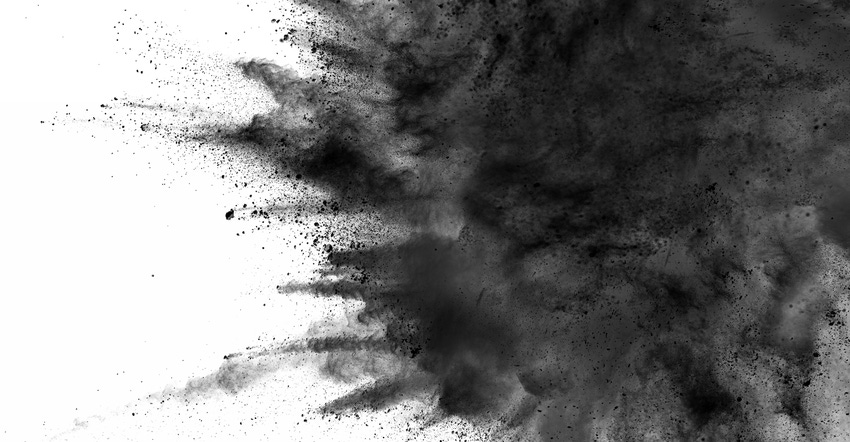Activated charcoal is hot in nontoxic personal care. Is it all smoke in mirrors or is this functional ingredient transforming the clean beauty industry? We take a look at growth of product launches at Natural Products expo, plus how retailers are educating on the ingredient.

Long before Santa Claus deemed it a punishment for those on his Naughty List, or it became the focal point of summer barbecues, charcoal had a very different connotation. Used in ancient Ayurvedic, Egyptian and Traditional Chinese Medicine practices, a form of the ingredient called activated charcoal has found its place in contemporary beauty and wellness regimens, thanks to its—wait for it—purifying qualities. Today, it’s one of the hottest ingredients in natural beauty, harnessing the power of ancient wisdom and catering to demand for simple wellness remedies that can neutralize the abundance of toxic chemicals we encounter daily. According to research from New Hope Network’s NEXT Data and Insights, from Natural Products Expo West 2014 to Natural Products Expo West 2017, the number of products containing charcoal jumped tenfold, from four to 42.
In order to continue supporting growth of the ingredient, Pharmaca Integrative Pharmacy educates customers about what it is, where it comes from and how it works, which isn’t always as simple (or as glamorous) as, say, moisturizing shea butter or antiaging antioxidants. “Activated charcoal is made by burning a source of carbon, such as wood or coconut shells,” says Felicia Imrie, aesthetician and manager of Pharmaca Integrative Pharmacy in Carlsbad, California. “The very high temperature removes all the oxygen and activates it with gases like steam. You’re left with a material with millions of tiny pores that capture, bind and remove heavy metals, chemicals and poisons.” The process, known as adsorption (which, yes, is different from absorption), is why the ingredient is thought to attract impurities.
The rise of activated charcoal
Just like many trends in the natural beauty category, what’s old is new. Because, well, what’s old worked and brands and consumers are discovering relevant modern uses for ingredients such as charcoal.
For your brief history lesson: Activated charcoal started primarily as a remedy for flushing toxins from the body when taken orally. Although it had been used for thousands of years, in the 18th and 19th centuries, scientists started researching its ability to counter toxic exposure. It’s still used medically when someone overdoses on a medication or consumes poison, but now it’s also found commercially in everything from juices, smoothies and supplements to facial masks, toothpastes, teeth-whitening products, deodorants and more.
So when did charcoal’s newfound popularity begin? Some attribute the ingredient’s recent success to Gwyneth Paltrow sipping on a charcoal-infused lemonade back in 2015. Since then, it has been touted in W, The Wall Street Journal and more. But its glory days may spawn from its presence in natural retail, where it straddles an appealing line between ancient wisdom and modern science (though the science piece arguably still needs to catch up a bit—who wants to invest?) Half of the 42 products at Natural Products Expo West 2017 that contained the ingredient were in the cosmetics category. It’s also appearing in supplements and beverages. We predict to see more personal care products containing the ingredient at Natural Products Expo East this week.
Activated charcoal for functional beauty
The notion of “detox” remains polarizing, with some media calling out activated charcoal specifically for lacking sound research and even being misleading. But when Imrie carefully explains how it works in cosmetics, it’s hard to understand why this ingredient would cause all that much controversy, especially in a cosmetics industry known for using harsh, abrasive chemicals that are some of the reasons we’re craving detox products to begin with.
“Activated charcoal is processed so finely and becomes so porous that it acts like a magnet to collect and trap toxins and chemicals,” says Imrie. Though the range of products it’s used in is vast, the thinking around how it works to detoxify is similar across the board. In oral hygiene products or deodorants, for example, it is thought to remove toxins from the mouth to remedy bad breath or body odor, whereas in skin care, it binds to impurities to alleviate or prevent blemishes and irritation caused by dirt and other skin villains. For teeth, it is thought to lift stains left by coffee, wine and more, making it an emerging natural whitening agent. As for its use in supplements and juices, add beauty to the overall energizing and cleansing benefits: Fewer toxins internally can lead to a clearer complexion.
For companies using the ingredient, it will require education. Not just about what the ingredient is but especially for products such as tooth whiteners, which create a very, err, different experience (one that can leave a mess in the sink or bathtub). It’s also important to recognize that not all customers will react to products containing activated charcoal the same way—and that a little can go a long way. “Activated charcoal is indeed beneficial, but we need to be careful not to overindulge,” Imrie says. Translation: Be judicious when it comes to delicate tooth enamel, finicky skin or a sensitive tummy.
About the Author(s)
You May Also Like




